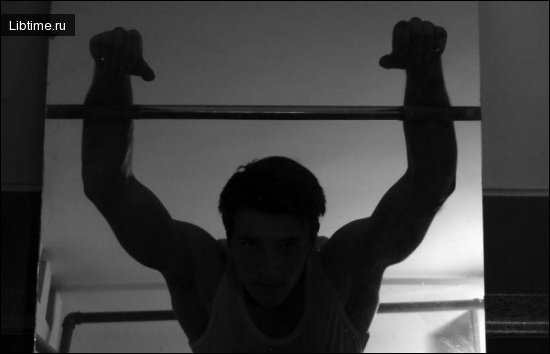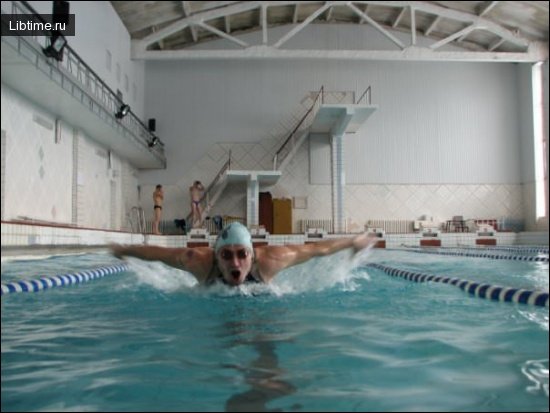Main sports
Gymnastics, athletics, skiing, skating, swimming, rowing, cycling, wrestling, boxing, weight lifting are the main sports. Each of them has its own characteristics, consisting mainly in the impact on the body.
When choosing a sport should be guided by these features and take into account the individual inclinations of the person who starts to practice sports. However, it should always be remembered that the health-improving effect mainly depends on the method of exercise, that is, how much and how engaged in a particular sport. 
Characteristics of the main sports
Let's characterize briefly the main types of sports:
- gymnastics,
- athletics,
- skiing,
- speed skating,
- swimming,
- rowing,
- cycling,
- weight lifting,
- wrestling,
- boxing
Gymnastics

Sports, or apparatus, gymnastics on the bar, uneven bars, rings and other equipment brings human motor skills to a high level of perfection. Movements become precise, smooth, well-developed muscles.
However, the presence of a large number of exercises with breath-holding can have an adverse effect on the cardiovascular and respiratory systems in cases where the gymnast will not combine gymnastics with athletic exercises in running, walking, skiing, skating, swimming.
Athletics
Athletics are walking, running, jumping, and throwing the discus, javelin, and shot put. These natural types of movement are particularly well dosed and can be used extensively by beginners in sports. 
Athletics, held all year round in the fresh air, extremely beneficial effect on the body: the nervous system, heart, lungs, blood. This makes it possible to recommend athletics even to people who have some deviations in their health.
Skiing

Winter landscape has a beneficial effect on the nervous system. Learning to walk on skis is relatively easy. Already after the movements are mastered, you can gradually increase the dosage of walking, mainly due to the distance.
The age range for skiing is very wide. Skiing can be recommended for children from the age of 5-6 years. Sporting activities, on the other hand, are practiced from the age of 12.
Speed skating

Sliding on ice reduces the effort spent on movement during normal running, and this allows the use of skating, even with pronounced health conditions. Ice skating can be recommended in middle age and even in old age with a particularly gradual increase in the load.
Swimming
The hygienic importance of swimming is very great. A person experiences here a whole complex of influences:
- the effect of water on the skin,
- air procedures,
- sunbathing.

The chest becomes convex, which creates the most favorable conditions for the work of the lungs. The work of the heart in swimming due to the difficulty of inhalation is intensified more than in other sports.
Therefore, in order to avoid negative effects on the cardiovascular system must, first of all, to work out the correct breathing, and then move to high-speed swimming. Children can be engaged in swimming from the age of 6-7 years. At the age of 12 they can do sports swimming and participate in competitions.
Rowing

Rowing as a sport cannot be recommended for people with abnormalities in the cardiovascular system. Rowing can be taught from the age of 10, and rowing can be practiced from the age of 14, very gradually increasing the load and under the guidance of experienced teachers.
In rowing, as well as swimming, an important health-improving element is natural breathing exercises. It is impossible not to mention rowing as the most effective means of strengthening the abdominal muscles. Despite the very intense load, with systematic training and rowing can be practiced until old age.
Cycling

Therefore, the cyclist should especially remember the need for a versatile physical activity: systematic classes of general gymnastics, running and so on.
Only in this case, cycling will bring the proper health-improving effect. Using a bicycle for walking, you should only gradually increase the distance, without bringing yourself in the first weeks to clear signs of fatigue.
Riding a two-wheeled bicycle can be taught to children of 8-9 years of age. At the age of 11-12, they can be allowed 30-40 minute bike rides, and at the age of 13-14, they can take up cycling.
Kettlebell lifting

However, the impact on the nervous system, respiratory organs and blood circulation in one-sided fascination with lifting weights can be negative, because it is associated with breath-holding.
Success in this sport can only be achieved by long-term general physical training: gymnastic exercises in combination with other types of physical exercise and sports. And even having started barbell exercises, it is necessary to systematically include in the training of running, walking on skis, skating and so on.
This type of sport is allowed to people who do not have significant deviations in health, starting from the age of 16.
Wrestling

Resistance exercises well develop muscles and intensely affect the internal organs. However, one-sided training in wrestling, saturated with elements of tension can as well as lifting weights, entail overstrain the nervous and cardiovascular systems.
This requires careful preparatory work and combination with other types of physical training of the athletic type (running, skiing and walking).
Wrestling can be practiced from the age of 14, but the first 2-3 years of training should be preparatory character of general developmental exercises and study of technical and tactical techniques.
In middle age and old age can only continue wrestling classes, started in youth. It is not recommended to start wrestling after 40 years of age, as it may negatively affect the cardiovascular system.
Boxing

In preparation for the fight in the ring boxers necessarily use athletic exercises - running, throwing, jumping, general gymnastics. Boxing fight itself is full of various situational moments, bringing up quick reaction, agility, determination, endurance and other moral and volitional qualities.
With the proper guidance training boxing classes do not cause negative changes in health and perfectly strengthen the body. Classes in the boxing section are allowed from the age of 13.
From a brief review of the health-improving value of major sports, it is clear that all of them in their own way good and the result of their activities, mainly depends on the proper organization of the training process in accordance with the age, health, fitness and regularity of classes.
Only systematic sports activities give a persistent health-improving effect, ensure sporting success, significantly prolong working capacity.


